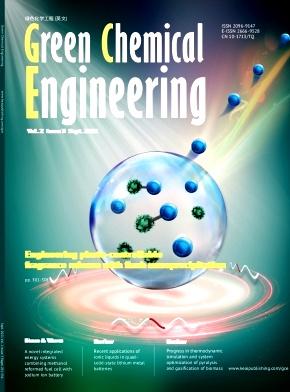用于绿色制氢的固体氧化物电解槽的机器学习辅助性能预测与优化
IF 9.1
Q1 ENGINEERING, CHEMICAL
引用次数: 0
摘要
固体氧化物电解电池(SOEC)有望有效地将可再生能源转化为氢。然而,传统的建模方法仅限于特定的或报告的SOEC系统。因此,开发了四种机器学习模型来预测各种类型、操作参数和进料条件的SOEC过程的性能。这些特征对SOEC输出的影响由Shapley加性解释和部分依赖图分析来解释。将优选模型与遗传算法相结合,确定每个输入特征的最优值。结果表明,改进的极限梯度增强回归(XGBoost)算法是该过程机器学习模型的核心,因为它具有最高的R2 (>;0.95)。电解槽描述符对系统性能的影响较大,贡献率达54.5%。有效面积、电压和温度是影响SOEC系统性能的三个主要因素,对系统性能的贡献率分别为21.6%、16.6%和13.0%。高温、高压和低有效面积是提高H2产率的最有利条件。经过多目标优化,确定最佳电流强度和产氢速率分别为1.61 A/cm2和1.174 L/(h·cm2)。本文章由计算机程序翻译,如有差异,请以英文原文为准。

Machine learning-assisted prediction and optimization of solid oxide electrolysis cell for green hydrogen production
The solid oxide electrolysis cell (SOEC) holds great promise to efficiently convert renewable energy into hydrogen. However, traditional modeling methods are limited to a specific or reported SOEC system. Therefore, four machine learning models are developed to predict the performance of SOEC processes of various types, operating parameters, and feed conditions. The impact of these features on the SOEC's outputs is explained by the Shapley additive explanations and partial dependency plot analyses. The preferred model is integrated with a genetic algorithm to determine the optimal values of each input feature. Results show the improved extreme gradient enhanced regression (XGBoost) algorithm is the core of the machine learning model of the process since it has the highest R2 (> 0.95) in the three outputs. The electrolytic cell descriptors have a greater impact on the system performance, contributing up to 54.5%. The effective area, voltage, and temperature are the three most influential factors in the SOEC system, contributing 21.6%, 16.6%, and 13.0% to its performance. High temperature, high pressure, and low effective area are the most favorable conditions for H2 production rate. After conducting multi-objective optimization, the optimal current intensity and hydrogen production rate were determined to be 1.61 A/cm2 and 1.174 L/(h·cm2).
求助全文
通过发布文献求助,成功后即可免费获取论文全文。
去求助
来源期刊

Green Chemical Engineering
Process Chemistry and Technology, Catalysis, Filtration and Separation
CiteScore
11.60
自引率
0.00%
发文量
58
审稿时长
51 days
 求助内容:
求助内容: 应助结果提醒方式:
应助结果提醒方式:


